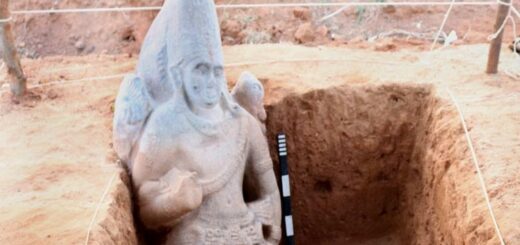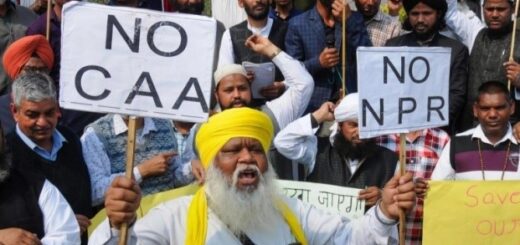National Current Affairs – UPSC/KAS Exams- 28th March 2019
Mission Shakti
Topic: Science and Technology
In News: In an incremental advance, India on Wednesday successfully conducted an Anti-Satellite (ASAT) missile test, named Mission Shakti, becoming the fourth country in the world to demonstrate the capability to shoot down satellites in orbit. So far, only the United States, Russia and China have this prowess.
More on the Topic:
- The satellite downed by the ASAT missile was Microsat-R, an imaging satellite which was launched into orbit on January 24, 2019 using a Polar Satellite Launch Vehicle (PSLV).
- Anti-satellite weapons provide the capability to shoot down enemy satellites in orbit thereby disrupting critical communications and surveillance capabilities. ASAT missiles also act as a space deterrent in dissuading adversaries from targeting the country’s satellite network.
About ASAT:
- It’s essentially a missile that can destroy or jam an enemy country’s satellite in space. Since most of the communication networks are satellite-based, this can have a disastrous impact on the country whose satellite gets targeted.
- ASATs can be used to intercept and jam communication or military satellites of enemy countries in the time of war and stop them from communicating with their soldiers. It can also be used to access critical information about troop movements or incoming missiles.
- The anti satellite weapons can even undertake pellet cloud attacks on enemy’s low orbit satellites.
- Other ASAT capabilities include cyber-attacks on space systems, Electro-Magnetic Pulse (EMP) explosion devices, directed energy (laser based) weapons and targeted missiles for destruction of satellites to sabotage the enemy’s military operations.
- Although no ASAT system has yet been put to use in the actual war, several nations have shot down their own (defunct) satellites to exhibit their ASAT prowess in a show of power.
- The range of an ASAT is limited and depends on where it is launched from. Satellites above the range of 20,000 kilometres are out of range. The US and Russia have the capabilities of launching an ASAT from the ship, land and space, while India, presently, has used a land installation.
Source: The Hindu
Official Secrets Act
Topic: Governance
In News: The Ministry of Home Affairs (MHA) issued five prosecution sanction orders last year under the Official Secrets Act (OSA), 1923.
More on the Topic:
- The Official Secrets Act was first enacted in 1923 and was retained after Independence.
- The law, applicable to government servants and citizens, provides the framework for dealing with espionage, sedition, and other potential threats to the integrity of the nation.
- The law makes spying, sharing ‘secret’ information, unauthorised use of uniforms, withholding information, interference with the armed forces in prohibited/restricted areas, among others, punishable offences. If guilty, a person may get up to 14 years’ imprisonment, a fine, or both.
- The information could be any reference to a place belonging to or occupied by the government, documents, photographs, sketches, maps, plans, models, official codes or passwords.
Has the law undergone any changes over the years?
- However, the Second Administrative Reforms Commission (SARC) Report, 2006, suggested that the Act should be substituted by a chapter in the National Security Act that incorporates the necessary provisions.
- The reason: it had become a contentious issue after the implementation of the Right to Information Act.
- The OSA does not define “secret” or “official secrets”. Public servants could deny any information terming it a “secret” when asked under the RTI Act.
- The SARC report stated that as the OSA’s background is the colonial climate of mistrust of people and the primacy of public officials in dealing with the citizens, it created a culture of secrecy.
- “Confidentiality became the norm and disclosure the exception,” it said. This tendency was challenged when the Right to Information Act came into existence.
- In 2015, the NDA government formed a high-level panel to look into the provisions of the OSA in the light of the RTI Act. No action has been taken on the panel’s report, which was submitted in 2017.
Is withholding information the only issue with the Act?:
- Another contentious issue with the law is that its Section 5, which deals with potential breaches of national security, is often misinterpreted. The Section makes it a punishable offence to share information that may help an enemy state. The Section comes in handy for booking journalists when they publicise information that may cause embarrassment to the government or the armed forces.
Model Mains Question: Analyse the official secrets act 1923 and suggest changes needed in the act in the present time.
Source: The Hindu
SEBI exempts govt. from open offer for PNB
Topic: Economy
In News: SEBI exempted the government from making an open offer for the shareholders of Punjab National Bank (PNB) but directed reduction in non-public shareholding in the lender post capital infusion.
More on the topic:
- An open offer is a secondary market offering, similar to a rights issue. In an open offer a shareholder is given the opportunity to purchase stock at a price that is lower than the current market price. The purpose of such an offer is to raise cash for the company in an efficient manner.
- Under SEBI norms, entities are required to make an open offer if their shareholding goes beyond a certain threshold. Against this backdrop the bank sought SEBI’s exemption from the open offer requirement for the government.
- According to SEBI, there would be no change in control of the bank pursuant to the proposed acquisition as the change would only be in the quantum of shares held by the government.
Source: The Hindu
Global Multidimensional Poverty Index 2018 Report
Topic: Important Reports
In News: India has reduced its poverty rate drastically from 55% to 28% in 10 years, with 271 million people moving out of poverty between 2005-06 and 2015-16, according to the Global MPI 2018 Report prepared by the United Nations Development Programme (UNDP) and the Oxford Poverty and Human Development Initiative.
More on the Topic:
- The report, covering 105 countries, dedicates a chapter to India because of this remarkable progress. However, India still had 364 million poor in 2015-16, the largest for any country, although it is down from 635 million in 2005-06.
- The report measures MPI, or multidimensional poverty index, which it says can be broken down to show “who is poor” and “how they are poor”.
- This factors in two measures, poverty rate as a percentage of the population, and intensity as the average share of deprivations that poor people experience. The product of these two is MPI. If someone is deprived in a third or more of 10 weighted indicators, the global index identifies them as “MPI poor”.
About the Index:
- The global Multidimensional Poverty Index (MPI) is an international measure of acute poverty covering over 100 developing countries. It complements traditional income-based poverty measures by capturing the severe deprivations that each person faces at the same time with respect to education, health and living standards.
- The MPI can be used to create a comprehensive picture of people living in poverty, and permits comparisons both across countries, regions and the world and within countries by ethnic group, urban/rural location, as well as other key household and community characteristics
- The index uses the same three dimensions as the Human Development Index: health, education, and standard of living. These are measured using ten indicators.
Health
- Child Mortality
- Nutrition
Education
- Years of schooling
- School attendance
Living Standards
- Cooking fuel
- Sanitation
- Drinking Water
- Electricity
- Housing
- Assets
Source:The Hindu
The Global Fund to Fight AIDS, Tuberculosis and Malaria
Topic: Health
In News: Hyderabad-based pharma company Laurus Labs Limited has announced that it has entered into a strategic partnership agreement with Global Fund for a period of 3.5 years. Through this agreement Laurus Labs will have the volume commitments from the Global Fund for the treatment of HIV/AIDS.
More on the Topic:
- The Global Fund to Fight AIDS, Tuberculosis and Malaria (or simply the Global Fund) is an international financing organization that aims to “attract, leverage and invest additional resources to end the epidemics of HIV/AIDS, tuberculosis and malaria to support attainment of the Sustainable Development Goals established by the United Nations.”
- Founded in 2002, the Global Fund is a partnership between governments, civil society, the private sector and people affected by the diseases.
- The organization maintains its secretariat in Geneva, Switzerland.
Source: The Hindu
Green Crackers
Topic: Environment and Ecology
In News: Council of Scientific and Industrial Research (CSIR), and National Environmental Engineering Research Institute (NEERI) has finalized the chemical formulation of ‘green’ crackers after a direction from Supreme Court.
More on the Topic:
- Barium nitrate and potassium nitrate will be used in the proposed formula, which will cut PM 2.5 emission by up to 30 per cent.
- The bulk production of such crackers will start after the clearance from Petroleum and Explosives Safety Organization (PESO).
About PESO:
- Petroleum And Explosives Safety Organisation (PESO) is the department formed by Government of India to control and administer the usage of explosives, petrol stations in India.
- The agency issues licenses for Operation of Petrol Stations under Form XIV, Licenses to operate Petroleum Product Transportation vehicles, Licenses for Refineries, Petrochemical Complexes, etc.
Source: The Hindu
Sharda Peeth Corridor
Topic: Culture
In News: Recently Pakistan has given its green signal for Sharda Peeth corridor.
More on the Topic:
- When opened it will be the second religious tract after Kartarpur corridor in Pakistan-controlled territory that will connect the two neighbouring nations.
- Sharada Peeth temple is revered by Kashmiri Pandits among other Hindus across the globe as it is believed to be one of the 18 Maha Shakti Peethas, or a “Grand Shakti Peethas”.
- It is considered to be the abode of Hindu Goddess Saraswati and it was built during the rule of Kushans (early 1st century).
Source: The Hindu
















